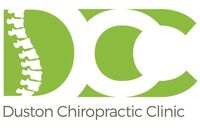Treatment for Headaches
The 3 most common type of headache are Migraine, Tension Type Headache and Cervicogenic Headache. As chiropractors we complete a thorough patient history can help us to form a diagnosis that we can use to work out a treatment plan.
Headaches are a very common presentation to chiropractic clinics and the vast majority are not serious. The history and examination help us to decide whether you may benefit from spinal manipulation, acupuncture, lifestyle advice or exercise. In some cases it may be necessary to refer out for further investigation if we suspect the headache may be the result of things like medication, conditions such as high blood pressure or whether you may need blood tests or scans.
Headaches are a very common presentation to chiropractic clinics and the vast majority are not serious. The history and examination help us to decide whether you may benefit from spinal manipulation, acupuncture, lifestyle advice or exercise. In some cases it may be necessary to refer out for further investigation if we suspect the headache may be the result of things like medication, conditions such as high blood pressure or whether you may need blood tests or scans.
What are the 3 most common headaches seen at Duston Chiropractic Clinic?
Migraine
The Migraine - it comes in all forms from frequent, infrequent, with strange visual symptoms, nausea, aversion to noise and light and in some cases neurological syndromes like facial numbness. Although some symptoms may require some further investigation to rule out other causes most patients get to know "their symptoms".
There's evidence to support spinal manipulation as a way to reduce the frequency and/or intensity of migraines in sufferers alongside exercise advice.
Cervicogenic Headache
These are often secondary to lifestyle factors such as posture, desk based jobs or too much smart phone use. They can be associated with muscle imbalance - tight around the top of the shoulders and back of the neck with weakness of the deep neck stabilising muscles. Often they will start in the base of the neck and shoulders and work up into the back of the head. Certain neck positions or movements can make them worse. A cervicogenic headache is commonly a symptoms of dysfunction in the neck and upper back, this increased strain on the joints and muscles then leads to painful headaches which is why manual therapy and exercises given by chiropractors can be effective in managing symptoms. Helping a patient to understand how to prevent these in the long term through self management and hearing about the results is always great for our chiropractors!
Tension Type Headache
Typically a mild-moderate head ache that is band-like or gripping around the head, usually you can continue with normal day to day tasks but there is often a reduced motivation to do exercise. These can be in episodes but in some cases (over 15 days a month for 3 months) become chronic. Acupuncture and exercise advice has some merit in treating these headaches.
The Migraine - it comes in all forms from frequent, infrequent, with strange visual symptoms, nausea, aversion to noise and light and in some cases neurological syndromes like facial numbness. Although some symptoms may require some further investigation to rule out other causes most patients get to know "their symptoms".
There's evidence to support spinal manipulation as a way to reduce the frequency and/or intensity of migraines in sufferers alongside exercise advice.
Cervicogenic Headache
These are often secondary to lifestyle factors such as posture, desk based jobs or too much smart phone use. They can be associated with muscle imbalance - tight around the top of the shoulders and back of the neck with weakness of the deep neck stabilising muscles. Often they will start in the base of the neck and shoulders and work up into the back of the head. Certain neck positions or movements can make them worse. A cervicogenic headache is commonly a symptoms of dysfunction in the neck and upper back, this increased strain on the joints and muscles then leads to painful headaches which is why manual therapy and exercises given by chiropractors can be effective in managing symptoms. Helping a patient to understand how to prevent these in the long term through self management and hearing about the results is always great for our chiropractors!
Tension Type Headache
Typically a mild-moderate head ache that is band-like or gripping around the head, usually you can continue with normal day to day tasks but there is often a reduced motivation to do exercise. These can be in episodes but in some cases (over 15 days a month for 3 months) become chronic. Acupuncture and exercise advice has some merit in treating these headaches.
Should I worry about my headache?
In some cases headaches need to be taken very seriously, if you experience any of the following we'd recommend contacting 111 (999 if urgent) or your GP. Although the presence of these symptoms doesn't guarantee pathology they do warrant further enquiry with a doctor:
1. Headaches following recent head trauma.
2. A sudden and severe headache described as a "Thunderclap" or "the worst headache ever".
3. A new, severe headache with numbness or weakness on one side of the body.
4. A new and severe headache associated with straining, coughing or a fever.
If you suffer from headaches and would like to book an appointment or just ask a couple of questions to see if treatment at our Northampton clinic may help call 01604 754456, get in touch via northantschiro@outlook.com or book online here.
1. Headaches following recent head trauma.
2. A sudden and severe headache described as a "Thunderclap" or "the worst headache ever".
3. A new, severe headache with numbness or weakness on one side of the body.
4. A new and severe headache associated with straining, coughing or a fever.
If you suffer from headaches and would like to book an appointment or just ask a couple of questions to see if treatment at our Northampton clinic may help call 01604 754456, get in touch via northantschiro@outlook.com or book online here.


